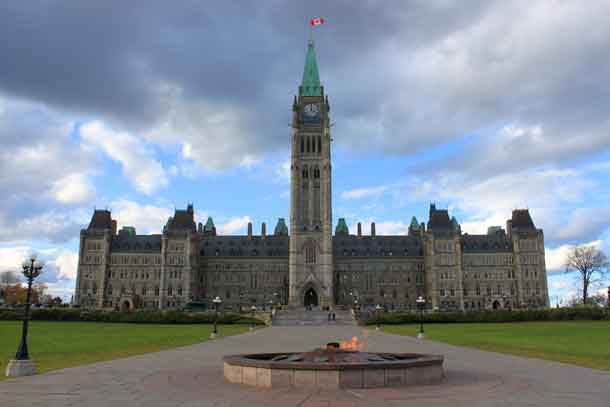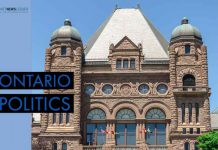HAMILTON, ON – INSIGHT – Election campaigns are supposed to highlight differences. Stark differences provide alternatives that can inform voter choices. As the grind of this 11-week federal election campaign unfolds, the policy proposals and attempts by the parties to define themselves – and each other – create the narrative that will inform voters’ final choices on Oct. 19.
However, it is plausible that the most meaningful result of this campaign could be a significant change to how we conduct federal elections. Policies buried in the footnotes of the party’s platforms, and barely registering with the voting public, could fundamentally change the way Canadians choose their federal Parliament.
Death of first-past-the-post?
Both Tom Mulcair’s NDP party and Justin Trudeau’s Liberal party are on record that this will be the last federal election using the “first-past-the-post” rules that have been in place since 1867. Many have responded to these proposals with a yawn. Opposition parties have frequently proposed electoral reform, only to fail to follow through once in office (which, by definition, they achieved under the old rules). Five provinces have seriously attempted electoral reform in the past decade. None of these processes resulted in meaningful change.
So it’s easy to dismiss the current proposals. Liberal activist Adam Goldenberg argued in Policy Options recently that Mulcair cannot be trusted to follow through on his promise, citing pressure from the grassroots members that caused Alberta NDP Leader Rachel Notley to drop a similar commitment before she became premier. Besides, he said, Mulcair has shown himself willing to put his party’s electoral prospects above his principals by refusing to support Green Party Leader Elizabeth May’s inclusion in all the debates. Of course, only a month or so ago, NDP activist Jamey Heath opined that the Liberals are the obstacle to “our long overdue realignment” by expecting that the pressure for change will ultimately come outside of the electoral process.
Yet, suppose the first-past-the-post system under which the Oct. 19 election is being fought creates the conditions for different political motivations. Would Trudeau’s confident rejection of a coalition with Mulcair’s NDP withstand the pressure to remove Prime Minister Stephen Harper from office if the opportunity presented itself?
Campaigns make a difference, so it is hardly prudent to predict outcomes this far in advance. However, it is credible to posit a scenario in which the Conservatives win 140-or-so seats, the NDP around 120, and the Liberals around 70.
History suggests a third-place party that formally enables a minority government to sustain power is rarely rewarded. Witness what happened to junior members of Liberal-NDP Accord in the 1987 Ontario election, or the Conservative-Liberal-Democratic Coalition in the 2015 British election. The enabling party tends to get very little of the credit and at least an equal share of the blame from voters. Even the unification of the Progressive Conservatives and Canadian Alliance in 2003 was made possible only by a degree of sacrificial diplomacy from Peter McKay who, in agreeing to unite the parties, effectively killed his own prime ministerial ambitions. Sacrifice being in notably short supply in contemporary politics, is Trudeau ready to risk his personal ambition to see systematic change achieved?
The decision may not be Trudeau’s to make. The Liberal brand is a historic and powerful brand within Canadian politics. Even though it has been in decline on the federal stage, it will not disappear easily. Established Canadian political brands have longevity that outlasts electoral misfortune. In 1993, the federal Progressive Conservatives went from majority government to two seats in the House of Commons, yet their brand remained such that MacKay’s surrender of it in 2003 was hotly contested. The Liberal establishment, which shows little love for its NDP counterparts after decades of sparring for centre-left votes, will surely not be keen to watch Trudeau help Mulcair become prime minister.
Rep by pop could lead to snap election in 2017
But what if the election results let both Liberal and NDP operatives realistically game scenarios in which they win the next election under new rules? Surely, then, removing Harper and the despised Conservatives becomes the necessary pretext to facilitate their strategies. Imagine a Liberal-NDP deal in which Mulcair becomes the prime minister provided he agrees to pass a new election law within two years, after which this election for change would be re-fought. There is plenty to be pointed to within both party platforms as a mandate for this change.
If you are concerned, Harper has turned the quick dash of a 37-day election campaign into an 11-week marathon of hope; prepare to have your patience tested further. Against the settled political outcome to which Canadians are accustomed, the 2015 vote could lead to deep uncertainty about how we’ll even choose our Parliament, followed by a snap 2017 election that will leave us more unsettled still. The only sure thing is that the consequences will be far reaching for Canada.
Ray Pennings
Ray Pennings is executive vice-president of Cardus, Canada’s leading Christian think tank.
© 2015 Distributed by Troy Media







